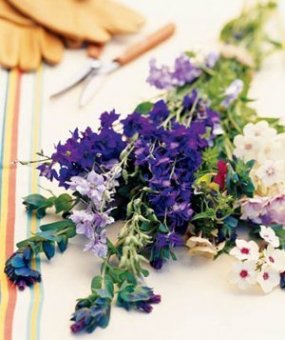
 Photo by Christina Schmidhofer
Photo by Christina Schmidhofer
It’s one of gardening’s funny little ironies: Lots of us are reluctant to rob our flower beds of beautiful stems to bring inside for fresh bouquets. (And after all the work that goes into babying those blooms, why shouldn’t we be a little protective?) But it’s possible to have the best of both worlds by creating a separate garden just for cutting. Decadent, you say? A headache waiting to happen? Think again. The key to success—and making the whole undertaking low-maintenance—is planning.
Step 1: Decide What You Want
Think about what types of flowers you want to grow—both annuals and perennials—and make a list. (To start out, consider limiting the varieties to a manageable half-dozen.) Try to focus on flowers that have longer stems, which will make them the best candidates for cutting and arranging. Include a few of each that bloom in spring, midsummer, and late summer to keep you in business all season long. You’ll also have to research how much space each plant needs; some of your favorites may require only eight to ten inches (say, pansies), while others may need two to three feet (dahlias). Depending on the plants you choose, a three-by-six-foot bed can hold up to about 20 plants.
Step 2: Scope Out Your Spot
Remember: Most cutting flowers prefer lots of sun—around six hours or more per day—so to allow for the most variety choose a sunny site that is well drained (meaning, the ground shouldn’t stay wet at all times). The ultimate size of the plot depends on how much space you have and how much time you can devote to taking care of it. A cutting garden isn’t supposed to look like a mixed border of plants, so there’s no need to get hung up on design principles. Visualize it more in terms of crops: You’ll be planting in rows.
Step 3: Prep the Planting Area
If you’re making a new bed in an existing lawn, first remove any turf grass and roots. Then enrich the growing area by working a layer of four to six inches of organic material (compost, chopped leaves, peat moss, etc.) into the top eight to ten inches of soil with a spading fork. If your ground is very sandy, swampy, or rocky or high in clay content, do yourself a favor and consider making raised beds with a simple kit and filling them with amended soil purchased in bulk. This saves you the daunting, near-impossible task of trying to turn bad soil into good.















